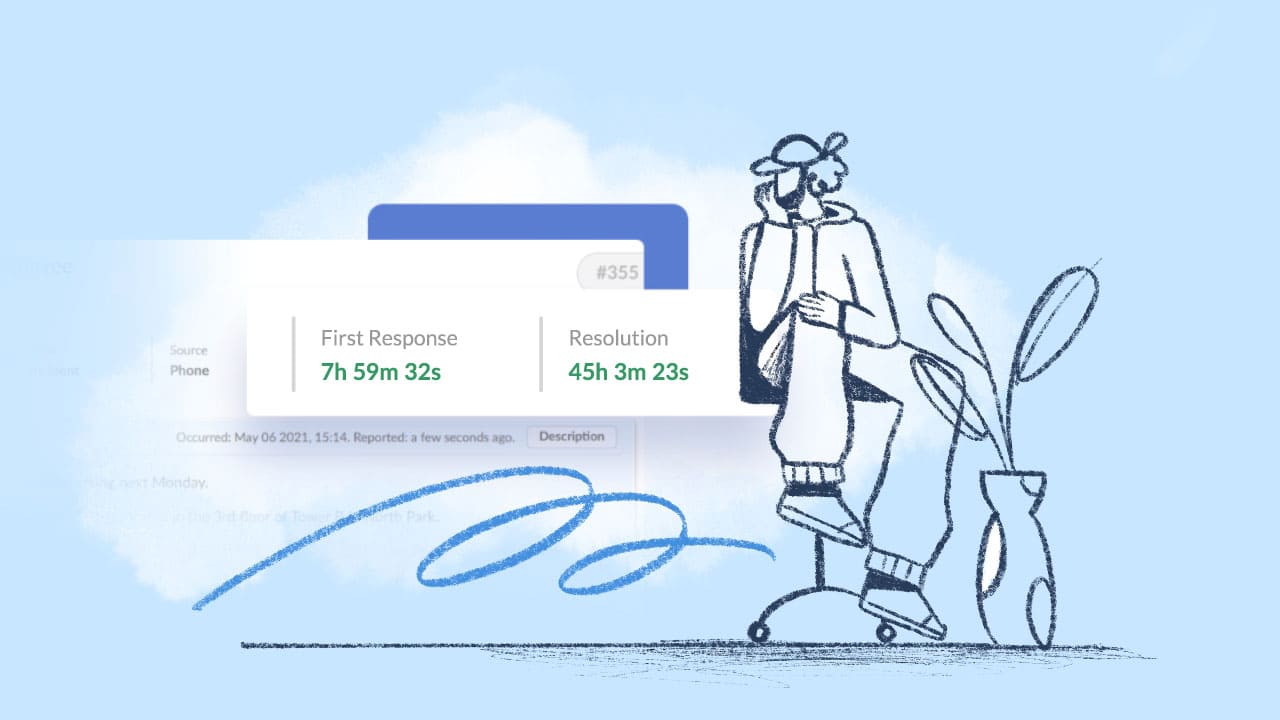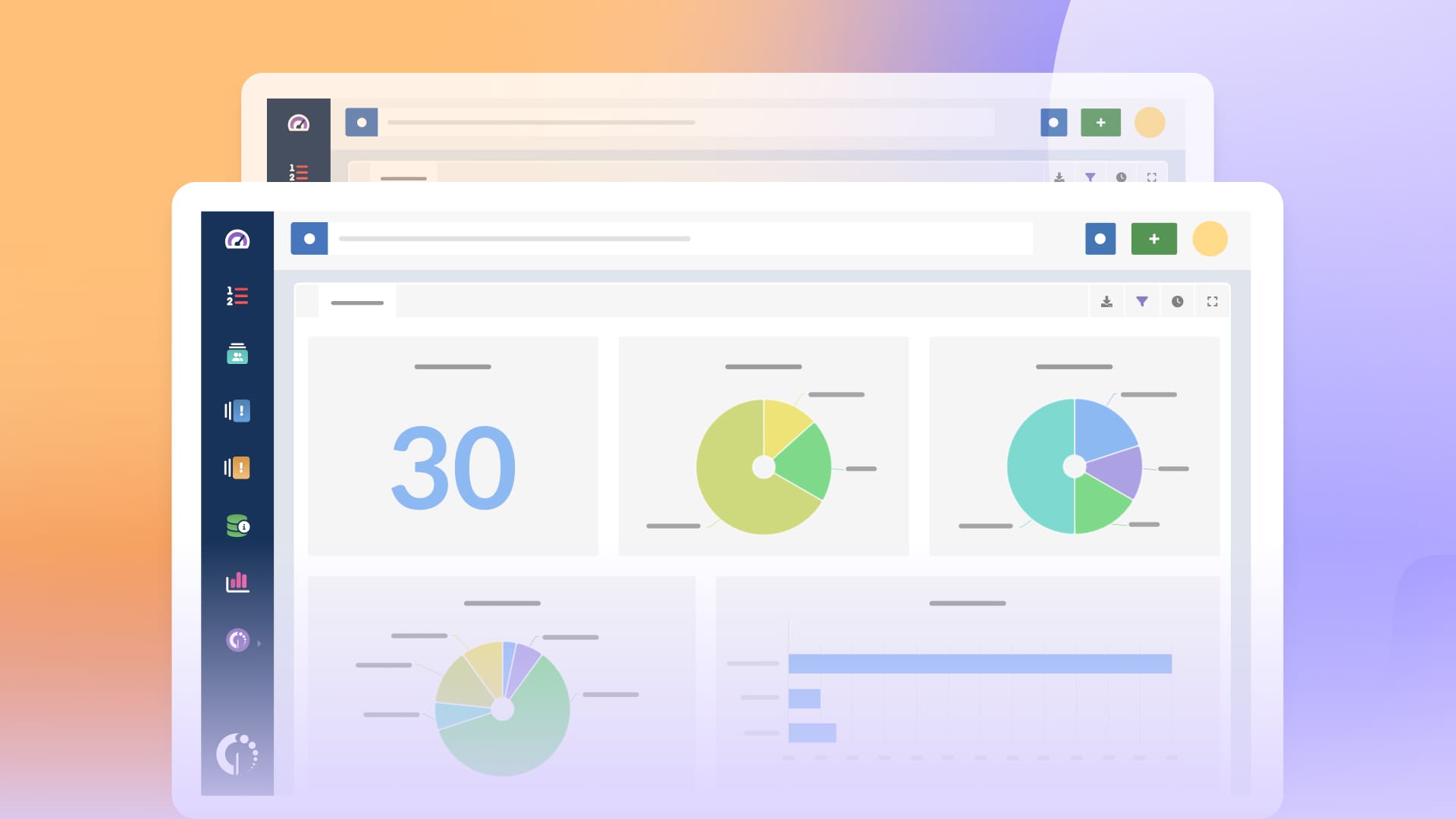If you work in IT or have any experience with Service Management, you've probably come across terms like Service Level Objective (SLO), Service Level Agreement (SLA), and Service Level Indicator (SLI). But what do they actually mean, and why do they matter? Understanding the role of a Service Level Objective can help ensure your IT services meet expectations—and it might just be the key to keeping your customers satisfied.
Curious to find out more? Keep reading to explore how SLOs fit into the bigger picture of IT Service Management (ITSM), how they differ from SLAs, and why they're essential for your organization's success.

What is a Service Level Objective (SLOs)?
A Service Level Objective (SLO) is a specific, measurable target for the performance of a service. It defines the expected level of service that a company or department aims to provide. SLOs often work in conjunction with Service Level Indicators (SLIs), which are metrics that track the performance of a service. The SLO typically represents the ideal performance based on these indicators.
In practice, an SLO might outline the acceptable uptime for a web service, the response time for resolving customer tickets, or the speed of a database query. It gives both the service provider and the customer a clear understanding of what to expect, allowing them to measure whether the service performs as promised.
Understanding SLOs
SLOs play a critical role in IT Service Management and are vital in Service Level Management (SLM). In ITSM, Service Level Management ensures that all service levels are agreed upon, monitored, and consistently met. SLOs form the backbone of this process, setting the "goals" for each service level to achieve.
The concept of SLOs also ties closely to Service Level Agreements (SLAs). While SLAs act as formal contracts between the service provider and the customer, outlining the service requirements and penalties for non-compliance, SLOs serve as the internal targets that ensure the service meets those expectations. If your team meets its SLOs, you’re likely on track to fulfill your SLAs.
In IT service delivery, SLOs help guide continuous improvement efforts. Whether you're monitoring help desk response times or cloud infrastructure availability, having clear SLOs gives you a benchmark to track success, measure performance, and pinpoint areas for improvement.
SLOs vs Service Level Indicators (SLIs)
Service Level Objectives and Service Level Indicators (SLIs) share a close relationship, but they serve different purposes. SLIs are the metrics that measure a service's performance. For instance, an SLI could track the average response time of your help desk or the percentage of server uptime over a given period.
An SLO, on the other hand, sets the target for these SLIs. If your SLI for server uptime is 99.9%, then the SLO represents the commitment to maintain that uptime. Essentially, SLIs provide the data, while SLOs define the goal you're trying to hit.
SLOs vs Service Level Agreements (SLAs)
SLAs and SLOs often get confused, but they are distinct. An SLA is a formal agreement between the service provider and the client, setting expectations for the service. SLAs usually include several SLOs, but they also describe the consequences if the service fails to meet those objectives, such as penalties or other forms of compensation.
In contrast, an SLO acts as an internal goal rather than a contract. It helps guide the service provider's operations to ensure they meet the expectations promised in the SLA.

What is an error budget?
An error budget refers to the allowable amount of downtime or failure under a given SLO. For example, if your SLO guarantees 99.9% uptime, that leaves room for 0.1% downtime. This margin is your error budget. It allows the service provider to roll out updates, fix bugs, or handle unexpected failures without breaching the SLA.
Managing an error budget helps teams balance innovation with reliability. It allows you to take calculated risks while staying within the service performance limits and ultimately, reduce the cost of downtime.
What is Service Level Management (SLM)?
Service Level Management (SLM) is the process that ensures all service agreements between service providers and customers are established, managed, and consistently met. It acts as a bridge between the expectations outlined in SLAs and the performance goals set by SLOs. SLM ensures that service levels align with business needs, driving the continuous improvement of service quality.
By implementing SLM, organizations can track performance, handle service requests, and assess whether they meet the established SLAs and SLOs. It plays a critical role in IT Service Management, as it focuses on maintaining high standards for customer satisfaction, service availability, and problem resolution. With effective SLM in place, businesses can foster transparency, accountability, and ongoing service improvement.
Why are Service Level Objectives important?
Service Level Objectives go beyond setting targets—they ensure high-quality service delivery. They provide a clear standard that service providers and clients can rely on. But why do they hold such importance? Let’s break down the benefits.
1. Performance monitoring and benchmarking
SLOs make tracking and measuring service performance easier. By monitoring SLIs and comparing them to SLOs, you can quickly identify any gaps between actual and desired performance. This insight ensures you address issues before they affect the customer.
Moreover, benchmarking performance over time becomes simpler with established SLOs. You can clearly see where improvements have occurred and where more work is needed.
2. Increased accountability
SLOs hold service providers and teams accountable for their performance. By setting clear goals, SLOs create transparency between service providers and their customers. Teams know what they need to achieve, and customers know what to expect.
With accountability in place, teams can focus on reaching their targets, resulting in more reliable and predictable service delivery.
3. Better customer satisfaction
When teams regularly meet well-defined SLOs, customers become more satisfied with the service. SLOs clearly define service expectations, which helps prevent misunderstandings or disappointments. Happy customers know what they’re getting—and when they’re getting it.

4. Prioritization of resources
SLOs help organizations prioritize resources effectively. When an SLO faces the risk of being missed, it signals the need for more attention or resources to prevent a service disruption. Teams can focus on the most critical issues, ensuring service performance stays aligned with expectations.
This approach not only improves service delivery but also optimizes how you allocate resources across teams.
5. Facilitates continuous improvement
By setting and tracking SLOs, teams encourage a culture of continuous improvement. Regular reviews of performance against objectives allow you to identify areas for optimization. This practice fosters an environment where teams constantly learn, adjust, and enhance service delivery.

5 Service Level Objective best practices
1. Set realistic and achievable SLOs
When you craft SLOs, make sure they are realistic. Over-promising on service performance leads to frustration for both providers and customers. It’s better to aim for achievable targets and consistently meet them, rather than set unattainable goals.
2. Define clear metrics
Make sure your SLOs rely on clear, measurable metrics. Vague terms like “fast” or “reliable” don’t provide enough guidance. Instead, use precise metrics like “response time within 15 minutes” or “99.9% uptime” to avoid any confusion.

3. Review and update regularly
Your business needs and technology will evolve, so your SLOs must keep pace. Regularly review and adjust your service objectives to ensure they align with current capabilities and customer expectations.
4. Communicate with customers
Transparency plays a key role in successful SLOs. Ensure your clients understand the objectives you're aiming for and why those targets exist. Clear communication builds trust and helps prevent misunderstandings.
5. Balance risk with error budgets
Always incorporate an error budget into your SLO planning. This safety net allows you to balance taking risks (e.g., rolling out new features) while maintaining service reliability.
How do Service Level Objectives work?
Service Level Objectives set measurable targets for various aspects of service performance, such as response times, system uptime, and error rates. These objectives give teams a clear understanding of what they need to achieve and offer a reference point for measuring success.
In practice, this means regular monitoring, reporting, and—when necessary—adjustments to the service. Teams often revise their workflows, allocate more resources, or reconfigure systems to stay on track.
SLOs require continuous attention and fine-tuning. Teams regularly review performance reports, hold retrospectives, and make changes to improve their ability to meet (or exceed) objectives.
Example of SLO, SLA, and SLI
Let’s say a cloud hosting provider guarantees its customers 99.9% uptime for their web hosting service. In this case, the Service Level Agreement would be the formal contract outlining that if the service uptime falls below 99.9%, the provider will offer compensation, such as a discount or extended service. The SLA is what binds the provider to specific obligations and sets the penalties for failure to meet the promised service levels.
The Service Level Objective is the internal goal the provider sets to ensure they can meet or exceed the 99.9% uptime mentioned in the SLA. For example, they might target an SLO of 99.95% uptime to give themselves a buffer. The Service Level Indicator, on the other hand, is the metric used to measure service performance. In this scenario, the SLI would be the actual percentage of uptime tracked over a given period (e.g., monthly or annually). The SLI tells the provider whether the service is meeting the SLO and, consequently, the SLA.
In conclusion
Setting clear Service Level Objectives is essential for delivering consistent, high-quality service. SLOs provide the framework for service providers to track performance, improve service delivery, and meet customer expectations. By understanding the key differences between SLOs, SLAs, and SLIs, IT teams can build more transparent, reliable, and customer-focused services.
By adopting SLO best practices, like defining clear metrics and balancing risk with error budgets, you can ensure your service remains innovative and reliable. Service Level Objectives not only serve as benchmarks for success but also foster continuous improvement within your organization.
Frequently Asked Questions (FAQs)
1. What is a Service Level Objective (SLO)?
A Service Level Objective (SLO) is a measurable target for the performance of a service. It defines the level of service that a company aims to provide, such as system uptime or response times.
2. How do SLOs differ from SLAs?
While an SLA (Service Level Agreement) is a formal contract between a service provider and a client outlining service expectations, an SLO is an internal goal that helps the provider meet the standards set in the SLA.
3. What is the role of Service Level Indicators (SLIs)?
Service Level Indicators (SLIs) are the metrics used to measure the performance of a service. SLIs provide the data that help determine whether an SLO has been met.
4. Why are SLOs important for ITSM?
SLOs are critical in IT Service Management (ITSM) because they provide measurable goals for service performance, guide continuous improvement, and help ensure accountability for service quality.
5. What is an error budget?
An error budget refers to the allowable margin for service failure or downtime under a given SLO. It gives teams the flexibility to innovate while maintaining acceptable service levels.














.jpg?upsize=true&upscale=true&width=780&height=205&name=ITIL%20Foundation%20Exam%20(2).jpg)
